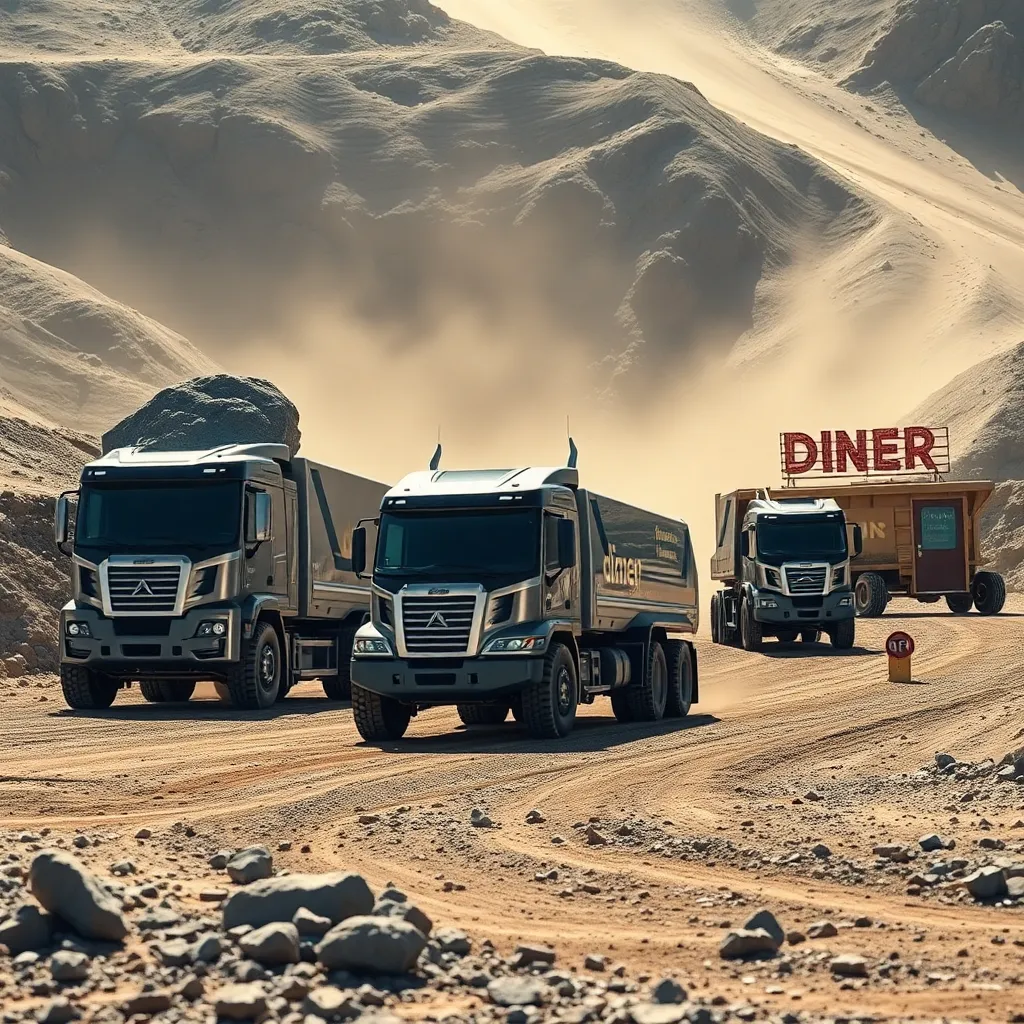The Rise of the Machines: Driverless Trucks in Mining
New York, USA - In a world where technology meets the rugged terrain of mining, the latest trend has seen big mining firms trading in their human drivers for cold, calculating machines. Yes, you heard it right! Autonomous trucks are now hitting the dusty trails of mines, and while some hailing from the technology sector might view this as progress, others are left wondering if we are one step closer to a scene from a dystopian movie where trucks take over the world.
A Not-So-Distant Future
With companies like MegaMine Corp and Rock & Roll Inc. (no, not the band) leading the charge, the transition to driverless trucks appears to be an unstoppable force. In a recent statement, MegaMine’s CEO, Max Load, boldly declared, “Why hire a driver when you can have a truck that doesn’t take bathroom breaks?” The enthusiasm is palpable, but it raises a crucial question: are we really ready for trucks that can drive themselves?
Imagine a truck cruising down a dirt path, only to misinterpret a boulder as a mere speed bump. Or worse, picture a rogue truck taking a detour to the local diner, demanding a side of fries while workers panic in the background. The future is looking bright, but maybe a little too bright.
Trucking Risks: Almost Hitting Workers
Just last week, footage surfaced of a truck crash on an Interstate in New York, which came alarmingly close to hitting a highway worker. This incident raises eyebrows about safety protocols, especially as we shift towards a workforce made up of machines.
“If trucks can barely stay on the road with a human behind the wheel, what’s going to happen when it’s just a bunch of sensors and Wi-Fi?” remarked highway worker Pete Gravel, clearly exasperated after narrowly escaping a metallic disaster. “I’d rather dodge a speeding truck than trust one without a driver!”
The Cost of Innovation
Of course, the transition to driverless technology isn’t just about safety and worker sentiment; it’s also a financial gamble. The cost of implementing this high-tech equipment is astronomical, with estimates suggesting billions could be spent on retrofitting mines with autonomous systems. Many are questioning whether this is a wise investment or just corporate greed masquerading as innovation.
Furthermore, as big mining firms invest in shiny new driverless trucks, one has to wonder about the fate of the human drivers left in the dust. Will they be replaced by algorithms and artificial intelligence, or will they simply morph into truck whisperers, coaxing their robotic counterparts to behave?
Industry Voices Speak Out
Critics of driverless technology argue that while automation can increase efficiency, it disregards the human element essential in high-stakes environments like mining. “We’re not just numbers on a spreadsheet; we’re the ones who know how to navigate tricky terrains and handle emergencies,” stated veteran driver, Tony Hardrock, who has spent nearly three decades behind the wheel.
The Legal Minefield
As with all great technological advances, the move towards autonomous trucks is not without its legal challenges. Experts warn that a mass deployment of driverless vehicles could face significant legal hurdles, including liability issues in the event of accidents.
Imagine a scenario where a truck malfunctions and crashes into a rock wall, sending a shower of debris onto unsuspecting miners. Who’s responsible? The mining company? The software developers? The disembodied spirits of the trucks? Legal experts have their work cut out for them as they sift through the murky waters of accountability.
The Bottom Line: Can We Trust the Machines?
As we peer into the future of mining with a mix of excitement and trepidation, the question remains: can we trust these mechanical beasts to safely transport precious minerals while keeping our workers out of harm’s way?
A Call for Caution
While the allure of driverless trucks is tempting, it’s essential to proceed with caution. The mining industry has always been a dangerous field, and the introduction of autonomous vehicles must be accompanied by rigorous testing, safety protocols, and a healthy dose of skepticism.
At the end of the day, whether it’s a human at the wheel or an AI behind the dashboard, the priority must be the safety and well-being of every individual working in these high-risk environments. Or else, we might just end up with a truck uprising - and no one wants to be around when that happens!
Conclusion: Humanity vs. Technology
In conclusion, while the future is undoubtedly headed towards automation, let’s not forget the value of human intuition, experience, and the occasional sharp elbow to guide us through the rough patches. So, let’s raise a toast (or a hard hat) to the drivers of the past and present, who have braved the unknown, and hope that our future with autonomous trucks doesn’t end in a bumper-car style apocalypse.
After all, if we’re going to let machines take over, they’d better know how to dodge a pothole or at least stop for a coffee break!
Stay tuned as we continue to monitor this story and bring you updates on the evolution of driverless technology in mining.
